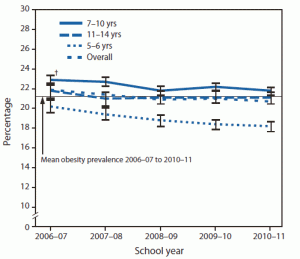I subscribe to The Lancet, and always enjoy reading its editor’s weekly Offline column. In October, editor Richard Horton wrote about how government obesity policy needs to be based firmly on scientific evidence.
And what is that evidence?
On this question, the evidence is utterly clear. Thanks to the work of the best scientific minds in obesity research, the most reliable evidence shows that the government’s plan should include taxes on unhealthy foods and beverages, front-of-pack traffic-light nutrition labeling, reductions of junk food and drink advertising to children, and school-based programmes to reduce television viewing and sugar-sweetened beverage consumption (Lancet, 2011;378:1451).
If you care about public health evidence, that’s what it shows. But doing these things goes against the business interests of food companies and they are doing everything they can to oppose such science-based measures.
In the U.S., the Sunlight Foundation has just released a report detailing the amounts of money food companies have spent on lobbying to block federal attempts to set nutritional standards for marketing foods to children (see previous posts).
Big companies such as Nestle, Kellogg, Viacom, McDonalds, General Mills, and Time Warner have indicated on official reports that they have lobbied on the controversial proposed guidelines; all together such companies have reported spending more than $37 million on lobbying this year.
The Sunlight report lists reported lobbying expenses (for example, Coca-Cola $4.7 million, General Mills $660,000). It also points out that
…Over all public relations were handled by Anita Dunn, formerly communications director at the Obama White House, at the firm SKDKnickerbocker Consulting.
Anita Dunn is of special interest because of her previous position at the White House. Now she’s working for the not-so-loyal opposition. Marian Burros reported on this switch for Politico:
Dunn, who served as White House communications director, is a senior partner at SKDKnickerbocker Consulting, which is handling public relations for the food industry’s campaign. Switching sides isn’t uncommon in the incestuous world of Washington consulting and lobbying, and the food industry coalition seeking to scuttle the voluntary guidelines argues that they are actually enforceable regulations in disguise that could lead to billions in lost sales.
Dr. Horton’s comments in Lancet imply that the British government isn’t doing much better.
As for the European Union (EU), Food Chemical News reported on December 8 that major food companies— McDonald’s, Burger King, Coca-Cola, Danone, Kellogg, Mars, Nestlé, PepsiCo, Procter & Gamble and Unilever, as well as the European Snacks Associations—have just pledged to promote only healthful products on their websites aimed at children under age 12.
By “healthful,” they mean products that meet “better-for-you” criteria. Food Chemical News cites a study suggesting that European children now see 79% less advertising of really bad junk foods on kids’ TV than they did in 2005, and 29% less across all TV programs.
The study did not say whether sales of those products were down too. If not, this could explain the willingness of companies to extend the voluntary restriction to websites aimed at very young children.
All of this would be much simpler for parents if governments paid attention to the research. If they did, they would:
- Tax unhealthy foods and beverages
- Require traffic-light front-of-pack labels
- Stop junk food and drink advertising to children
- Institute programs to reduce television viewing
- Institute programs to reduce sugar-sweetened beverage consumption
Taken together, these might actually make some progress in reducing childhood obesity.



